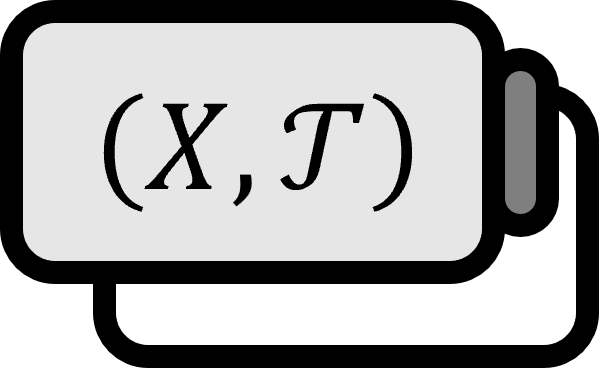Limits of sequence are not unique in general Space
Theorem
In general, in a topological space, the limit of a sequence is not unique.
Explanation
This might sound surprising, but it is indeed true. Until now, we have been accustomed to the image of intervals containing sequences in analysis narrowing down to converge to a point. However, according to the concept of convergence defined in topology, there is no reason for sequences to converge to a single point depending on the topological space.
To ensure the uniqueness of a limit, Hausdorff spaces are commonly assumed.
Counterexample
It is sufficient to present a counterexample where multiple limits exist.
Consider a sequence $\left\{ x_{n} \right\}$ consisting of distinct points in an ample space $\left( \mathbb{R} , \mathscr{T}_{f} \right)$. Let us arbitrarily set a point of convergence for $\left\{ x_{n} \right\}$ as $x \in \mathbb{R}$. There exists an open set $U \in \mathscr{T}_{f}$ containing $x$, and $\mathbb{R} \setminus U$ is a finite set. Since $\left\{ x_{n} \right\}$ consists of distinct points, for all $n > n_{0}$, there cannot be $n_{0} \in \mathbb{N}$ satisfying $x_{n} \notin \mathbb{R} \setminus U$. However, since $\left\{ x_{n} \right\}$ does converge, for all $n > n_{0}$, there must exist $n_{0} \in \mathbb{N}$ satisfying $x_{n} \in U$. By the definition of convergence, $\left\{ x_{n} \right\}$ converges to $x$, but it doesn’t particularly matter what $x$ is.
■
If this is confusing, it’s helpful to think about how the definition of convergence has changed and what an open set in an ample space means.
In the traditional metric space, an open set referred to a collection of points within a given distance from a central point. Therefore, although it is said to be “all open sets,” the key was to satisfy the condition in the vicinity of the point. If the condition continues to be satisfied no matter how small the set is chosen, it’s as if the check for “all open sets” is complete.
However, in an ample space, if we consider $U$ and another open space, something like $U \setminus \left\{ a \right\}$ also becomes an open set. Whether the entire space is real numbers or anything else, removing each point one by one still results in an open set, making it meaningless to consider “distance” here. Therefore, even if we check all open sets, there’s no reason for them to gradually diminish, and the limit is not specified.
